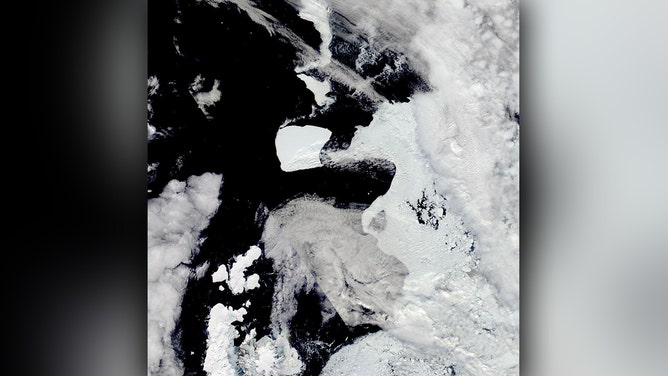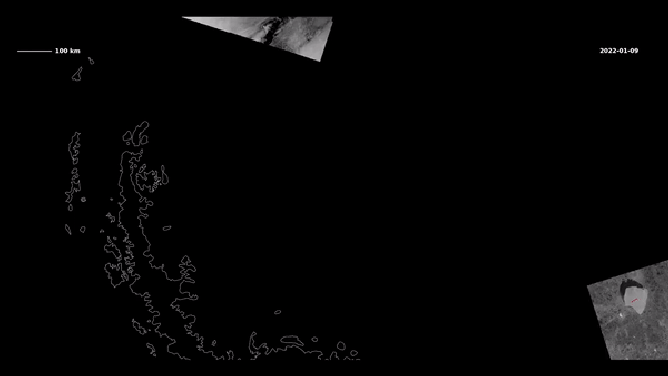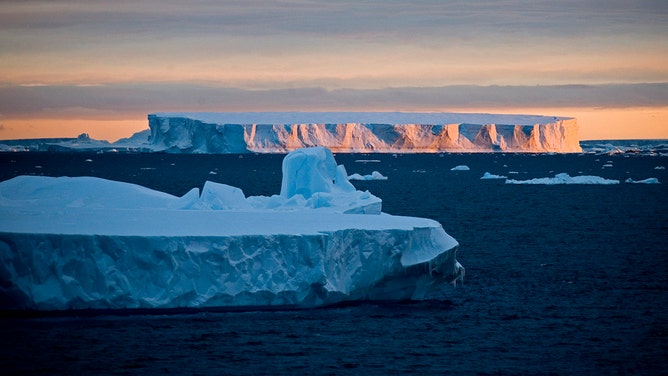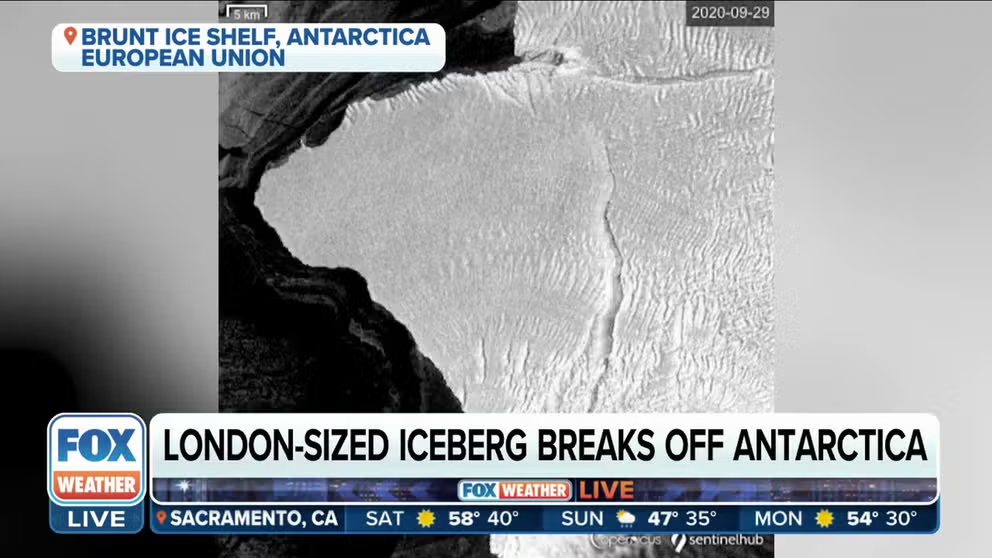Watch: World's largest iceberg - three times the size of LA - moving after being grounded for nearly 40 years
Currently, A23a has exited the Weddell Sea and is now heading into the open ocean. It is currently passing the northern tip of the Antarctic Peninsula, driven by winds and currents.
FILE: Iceberg the size of London breaks off Antarctica
Head of Mapping and Geospatial Group at the British Antarctic Survey Andrew Fleming says cracks on Antarctica’s Brunt Ice Shelf are naturally occurring and led to the new iceberg forming.
ANTARCTIC PENINSULA, West Antarctica – After being anchored to the ocean floor for more than three decades, the world's largest iceberg has finally broken free and is now drifting in the open sea.
According to the British Antarctic Survey (BAS), Iceberg A23a, which is more than three times the size of Los Angeles and twice the size of Greater London, is on the move.
ANTARCTIC'S EXTREME WEATHER DRAWING MORE CRUISE SHIP EXPEDITIONS

This image, provided by Maxar Technologies, shows iceberg A23a moving through the sea near Antarctica on Nov. 15, 2023.
(Maxar Technologies via British Antarctic Survey)
A23a is a 1,506-square-mile ice shelf that calved in 1986, BAS told FOX Weather. It became grounded in the Weddell Sea and is currently 1,312 feet thick, according to the agency.
"It started moving minutely in 2020, but as you can see from the time lapse it started picking up speed in early 2022," said Em Newton, a digital communications officer for BAS.
LOW SEA ICE IN ANTARCTICA CAUSING 'CATASTROPHIC BREEDING FAILURE' OF PENGUINS, STUDY FINDS

A time lapse of satellite imagery from January 2022 shows iceberg A23a drifting away from its original position in the Weddell Sea after calving in August 1986.
(Copernicus Sentinel-1 / British Antarctic Survey)
Currently, A23a has exited the Weddell Sea and is now heading into the open ocean. It is currently passing the northern tip of the Antarctic Peninsula, driven by winds and currents.
It is highly likely that it will be swept along by the current in the South Atlantic through 'iceberg alley' as it slowly melts away, Newton said.
New AI tool helps detect icebergs
Icebergs are an important part of how the ocean works. When icebergs melt, they add freshwater and nutrients to the ocean. This affects how much life can grow in the ocean, how the water moves around, and how sea ice forms and melts.
However, icebergs can also be dangerous for ships. That's why it's crucial to know where icebergs are and how big they are, according to the BAS.
That's why researchers are now utilizing a new AI tool to detect icebergs in the Southern Ocean. This marks the first step toward scientists being able to track the complete life cycle of most icebergs across Antarctica using satellite data.
ANTARCTICA’S ‘DOOMSDAY GLACIER’ IS MELTING AWAY DIFFERENTLY THAN SCIENTISTS FIRST THOUGHT

A view of the sunset over a tabular iceberg in the Weddell Sea during a voyage to Antarctica on a ship called "Le Diamant" in February 2006.
(Michel Setboun / Getty Images)
The study, recently published in the journal Remote Sensing of the Environment, showed how AI can now help detect icebergs in areas with high sea ice concentration, allowing scientists to track their movements and better understand iceberg dynamics.
"Monitoring and predicting how many billions of tons of ice melts into the world’s oceans is a major challenge due to complex physics and the interplay between the ocean, ice and atmosphere," said Scott Hosking, head of the BAS AI Lab.
For the study, researchers demonstrated the AI algorithm’s performance on different satellite images, taken over a 12-month period between October 2019 and September 2020. The tool identified almost 30,000 icebergs.
Researchers said they hope to use this AI approach to identify any changes in the numbers, size and pathways of icebergs, which are all expected consequences of climate change.
